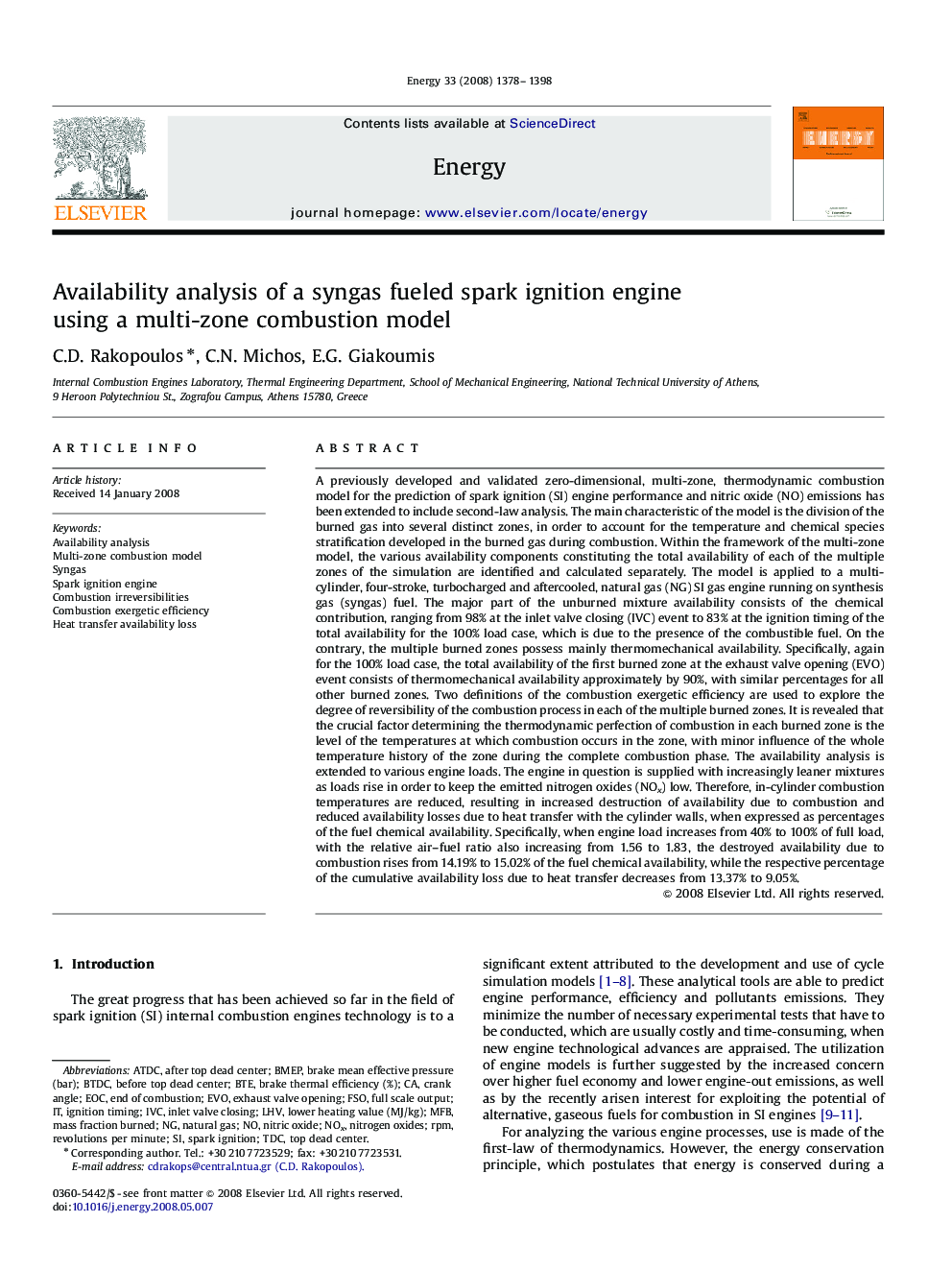| کد مقاله | کد نشریه | سال انتشار | مقاله انگلیسی | نسخه تمام متن |
|---|---|---|---|---|
| 1736203 | 1016208 | 2008 | 21 صفحه PDF | دانلود رایگان |

A previously developed and validated zero-dimensional, multi-zone, thermodynamic combustion model for the prediction of spark ignition (SI) engine performance and nitric oxide (NO) emissions has been extended to include second-law analysis. The main characteristic of the model is the division of the burned gas into several distinct zones, in order to account for the temperature and chemical species stratification developed in the burned gas during combustion. Within the framework of the multi-zone model, the various availability components constituting the total availability of each of the multiple zones of the simulation are identified and calculated separately. The model is applied to a multi-cylinder, four-stroke, turbocharged and aftercooled, natural gas (NG) SI gas engine running on synthesis gas (syngas) fuel. The major part of the unburned mixture availability consists of the chemical contribution, ranging from 98% at the inlet valve closing (IVC) event to 83% at the ignition timing of the total availability for the 100% load case, which is due to the presence of the combustible fuel. On the contrary, the multiple burned zones possess mainly thermomechanical availability. Specifically, again for the 100% load case, the total availability of the first burned zone at the exhaust valve opening (EVO) event consists of thermomechanical availability approximately by 90%, with similar percentages for all other burned zones. Two definitions of the combustion exergetic efficiency are used to explore the degree of reversibility of the combustion process in each of the multiple burned zones. It is revealed that the crucial factor determining the thermodynamic perfection of combustion in each burned zone is the level of the temperatures at which combustion occurs in the zone, with minor influence of the whole temperature history of the zone during the complete combustion phase. The availability analysis is extended to various engine loads. The engine in question is supplied with increasingly leaner mixtures as loads rise in order to keep the emitted nitrogen oxides (NOx) low. Therefore, in-cylinder combustion temperatures are reduced, resulting in increased destruction of availability due to combustion and reduced availability losses due to heat transfer with the cylinder walls, when expressed as percentages of the fuel chemical availability. Specifically, when engine load increases from 40% to 100% of full load, with the relative air–fuel ratio also increasing from 1.56 to 1.83, the destroyed availability due to combustion rises from 14.19% to 15.02% of the fuel chemical availability, while the respective percentage of the cumulative availability loss due to heat transfer decreases from 13.37% to 9.05%.
Journal: Energy - Volume 33, Issue 9, September 2008, Pages 1378–1398